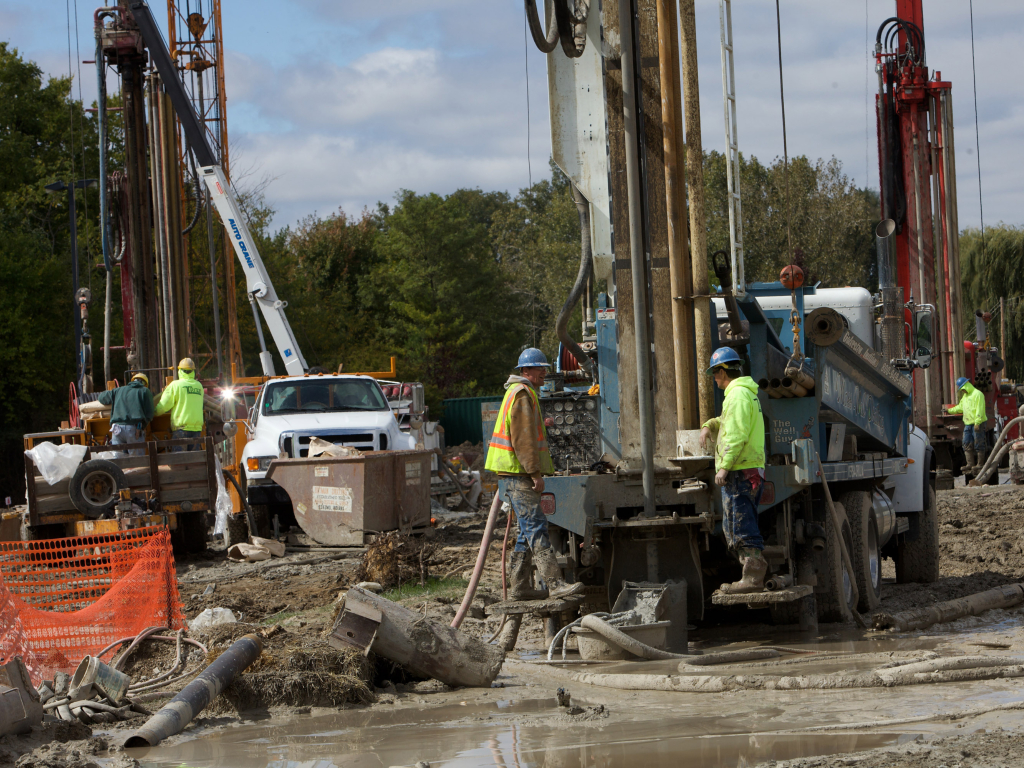Ball State’s geothermal system heats and cools 47 buildings, covering 5.5 million square feet of space. In addition, Ball State saves approximately 45 million gallons of water, 500 billion British thermal Units (BTUs) of energy, and $2.2 - $2.5 million annually.
Until Ball State has enough geothermal and renewable energy to claim carbon neutrality, the university has opted to sell its carbon credits through a carbon credit validator facilitated by Second Nature. As of 2018, Ball State has amassed approximately $800,000 from sold carbon credits, and the funding is used for sustainability efforts and energy reduction efforts on campus. Once the university is ready to go carbon neutral, Ball State intends to stop selling its credits.
The project produced approximately 2,300 jobs in Indiana and strove to use American-manufactured products.
Ball State no longer has to coordinate and pay for the disposal of coal ash, and switching from a coal-based boiler system to geothermal energy reduced Ball State’s carbon footprint by more than half.
*Netted to account for additional electrical power purchased to operate the system.
Ball State has determined that the system that was installed reduced its annual maintenance costs. The decrease in costs is due to the maintenance of heat pump chillers which are less maintenance intensive than maintaining coal stoker fire boilers.
Building occupants have not complained about the new system. Instead, they have reported that building temperatures are consistently comfortable. In addition, nearby residents and offices no longer have to experience the presence of soot from the coal plant.
Since the project was started, approximately forty universities have been in communication with Ball State University engineers in search of information that will help them implement their own geothermal heating and cooling systems.
Challenges
James Lowe, the associate vice president for Ball State’s Department of Facilities Planning and Management said, “One of the biggest challenges was seeking funding from the State. We had to convince them that geothermal energy was the best option for Ball State’s future energy needs. We focused on three main criteria when proving our claim: the system’s capacity, condition, and environmental implications. It is difficult to convince people that geothermal energy is worth the disruption of digging up campus and drilling messy boreholes.”
Lessons Learned
Lowe reported, “If I had to do it all over again, we would have done a better job of collecting actual steam usage data by building in advance of starting the project. Our data for cooling consumption by building, another important metric for designing a geothermal project, was more accurate. The reason knowing this information is important is because you have to balance the heating and cooling needs of the campus. Before geothermal, we produced and distributed approximately 800M lbs of steam to be used on campus. We had accurate data to show that 20-25% of the heat value of the fuel we were using was lost during the production of the steam. We did not accurately account for the heat lost in the distribution system. Therefore, we were led to believe that we were heating dominant, and we are actually cooling dominant.
Understanding whether or not the campus uses more heat or more air conditioning in total throughout the year is important because balancing the amount of heat removed and inserted into the ground is important to the efficiency of the operation. The ground below five feet down is 55 degrees. While using the geothermal system, we are continually inserting thermal energy into the ground or removing thermal energy from the ground. We have to net out to zero at the end of the year, otherwise we would start to overheat or sub-cool the ground, which makes the system less efficient.”
How do you balance the system?
“Well, we still have a steam operation. I’m still making steam by burning natural gas. If I found that I am taking too much heat out of the ground (and therefore cooling the ground), then I make a little more steam on campus and use it to heat buildings in lieu of thermal energy removed from the ground. If I produce too much heat and need to avoid overheating the ground, I can use the cooling tower to throw extra heat into the atmosphere. I’d rather not do that. We are trying to figure out an alternative use for the excess energy.”




